- Dasha
- Report Consultation
- NVRA Raja Meena 2 Junior
- :K GURU RAJESH
- Astrology Books
- Dr. Suresh Chandra Mishra
- UBSPD Publications
- Sumati Samant
- J.N.Bhasin
- Marriage Astrology
- Birth Time Rectification
- Tilak Chand Tilak
- Muthireddy Prabhakar
- B Hariharan
- Jaimini Astrology
- Mundane Astrology
- Crystal
- Dr. Rudra Dev Tripathi
- Dr. K S Charak
- Prakhya art printers pvt.ltd.
- Iranganti Rangacharya
- BigNote Publications
- Consultation by Sunil John
- Vijaya Kumar
- Dr. K S. Charak
- Children And Astrology
- Panchang
- O.P.VERMA
- Vani Publications
- KSR Prasad
- Medical Astrology
- Astrology Webinar
- Niroge Duniya
- ;Jay Yadav
- Bhrighu Astrology
- Vastu Consultation
- Shizuko Yamamoto
- Ramesh Vaish
- J K Sethi Rohit Sethi Chetan Sethi
- Authors
- Mridula Trivedi
- N E MUTHUSWAMY
- Brahamananda Tripathi
- V.P. GOEL
- Meenakshi Priyadarshini
- ASHISH GUJRAL
- Pradeep Bhushan Goel
- Pawan Ballabh Thapliyal
- Dharmadatt Vaidh
- Amadea Morningstar
- Heinrich Zimmer
- GOPAL SHARMA
- PT. TARACHANDRA
- RAM LAL SHAH
- C. H. Asrani
- HARISH JOHARI
- Shristi Sahoo
- Partha Sarathi Rout
- SHRI RADHARAMAN 'SUMAN
- ABHINAV MISHRA
- RAMESHWAR CHANDRA SHASTRI
- DR. CHANDRAMOHAN JHA
- Shivesh Prasad Mishra
- Vikash Sharma
- Z. Ansari
- V. S. KALYANRAMAN
- Satish K. Navathe
- Jagannath Bhasin
- JATINDER PAL SINGH SANDHU
- LAXMI KANT VASHISTH
- Dr. Uday Kant Misra
- Acharya Bhawna Bhatiya
- GAYATRI DEVI VASUDEV
- Shalila Sharamon
- Gopal Das Neeraj
- John E. Coleman
- RAMESHWAR BHATTA
- Vijaya Kumar
- Bukkyo Dendo Kyonkai
- SHRI RAMCHANDR
- Rakesh Soni
- Tilak Chand Tilak
- DR. NEERAJ PANDEY 'DADA'
- Deepak Bisaria
- Dr. Challa Somasundaram
- Howard Beckman
- Lalitha V
- Kunwarlal Jain
- N. CHIDAMBARAMIYER
- KUSUM VASHIST
- Hemant Kumar Sharma
- Dr. Revathi Vee Kumar
- Deepak Bhardwaj
- M.K. AGARWAL
- DR. SHANKER ADAWAL
- VASANT LAD
- Vivekshri Kaushik Vishvamitra
- MOHAN BHAI D. PATEL
- Dr. N.H.Sahasrabuddhe
- BANSI PANDIT
- Bryson
- Sawan
- Idea Baba
- Pandit Pannalal Jyotishi
- Siddhayogi Sivadasan Ravi
- PT. LASHANLAL JHA
- K.P. KRISHMAN’S
- Thich Nhat Hanh
- Dr. Rajbeer Singh
- Shri Ram Gopal Goswami ji
- T.P Trivedi
- Dr E S Neelakantan
- Shri Vindheshwari Prasad Dwivedi
- Joni Patry
- Ashwini Baqaya
- Naval Singh
- ASHOK BHATIA
- S.S Dahiya
- Samprasad Vinod
- ATREYA
- Joseph Campbell
- SEVARAM JAIPURIA
- SHRI KASHIRAM
- BINOD KUMAR JOSHI
- Ramesh Vash
- B.K.S. Iyenger
- S. Prakash
- Shri Bhagavatananda Guru
- MANDAN SUTRADHAR
- Durga Prasad Shukl
- GIRIJASHANKAR SHASTRI
- Dr. Amar Aggarwal
- Dr Amar Agarwal
- G.V. Prabhakara Murthyc
- U.K JHA
- DR. N. RAMAMURTHY
- E. S. B. R. MISHRA
- LR Chawdhri
- M. H. K. Shastri
- Baby Krishna
- RUDRADEVI TRIPATHI
- David Frawley
- JAMES T. GLOVER
- Rajbali Pandey
- E Rameshwar Prasad
- JWALA PRASAD MISHRA
- Paramahansa Yogananda
- M. ANJANEYULU
- BIJOYLAXMI HOTA
- P. MAHIDHAR SHARMA
- K Hariharan
- Rajendar Menen
- MAHARSHI YATINDRA
- PROF. MRIDULA TRIPATHI
- Tirpur S. Gopalkrishnan
- Onkar Lal Sharma `pramad`
- Pandit Shri Kamlakant Thakur
- Madhav Janardan Ratate
- Alan Leo
- Sita Ram Singh
- Shrimdhukanta Jha
- Rajbir Singh
- Hemant Thakorbhai Bhatt
- Indrodeep Banerjee
- P. L. KHUSHU
- RAMA KRISHNA GOYAL
- Sunil V. Joshi
- PT. KRISHAN ASHANT
- Kaulacharya Jagdishanand Tirth
- anhavi N. Sahasrabuddhe
- Hart De Fouw
- R. D. MAHATME
- RAMESH CHANDRA SHRIVASTAVA
- C. M. Srivastava
- Mohan Kumar Kashyap
- Sri M.P. Shanmugam
- Mahrishi Bhrigu
- Sudhir Kove
- SHRIKRISHNA 'JUGNU
- p khurran
- Dr M.H.K. Shastri
- Pt. Ramjilal Gaur
- Girish Chandra Joshi
- Dr. A. V. Mohandas
- Neelam Gupta
- Ramesh Kumar
- H.K Thite
- K.C Vats
- PT. MUKUNDVALLABH MISHRA
- E.d. Perrone
- AMRITA PRITAM
- Nishantketu
- ISHWARI PRASAD PANDEY
- GEETA JOSHI
- Guneeta Dhingra
- APARNAA N RAJE
- U Suman Lathaa Metha
- MATRI PRASAD PANDEY
- DA Negandhi
- S S Gola
- KSR Prasad
- DR. NARESH JHA
- Dr. Brijbihari Nigam
- K N RAO
- B. Hariharan
- DR. V.P. SHUKLA
- PT. LASANALAL JHA
- Bepin Behari
- Pramod Kothari
- SURYA NARYANA VYAS
- ANURAG MATHUR
- Vasudeo Govind Apte
- R. Verma
- J. Sithamparanathan
- PT. BASTIRAMJI
- Vaidya Suresh Chaturvedi
- Dr S.R Jindal
- DINA NATH
- A.R.Hari
- VAIDYA MOOLCHAND BHARDWAJ
- Padmanabha Sharma
- Rekhaa Kale
- R.N. Vyas
- Prabodhchandra Madhukar
- Chandrashekhar Mishra
- Pandit Shivprasad Sharma
- O.P. Verma
- M G Kastwar
- Shailja Pandey
- Deepak Kapoor
- SAMPATH KUMAR MEDAVARAPU
- ER. P.L. KHUSHU
- Charubel
- K.S. RAMAKRISHNA AIYAR
- PARMANAND SHARMA
- Light Miller
- R. K. Madhukar
- Mahesh Dutt Sharma
- PT. SHRI RAVIDATTA
- Peter Newton
- Amit Abraham
- NAVNEET KAUSHIK
- Paul Bruntan
- Pramod Sagar
- SHANKAR BHAROSA JHA
- Pdt. Gyankunsh Kaushik Ji
- Dr. Nimai Banerjee
- Shri Vishnu K Acharya
- H.A. Padmini
- Vivekshri Kaushik Vishavamitra
- Sharad C. Joshi
- Birendra Nautiyal
- A V Mohandas
- Kanta Gupta
- C.A. SUBRAMANIA AIYAR
- S K DUGGAL
- Dr. Hanif Khan Shastri
- ADAMUIR
- Vishnu Dass
- Dennis M. Harness
- B.D. Sharma
- PT. SHALAGRAM JYOTISH
- SRI BHARATI KRSNA TIRTHAJI MAHARAJA
- Rajiv Sachdev
- Upendra Dhakre
- Himanshu Shangari
- JAYANTA BHAUMIK
- DR. DURGADUTT MISHRA
- Prem Dixit
- MAHAYOGI PILOT BABA
- Dr. Gauri Shankar Kapoor
- Pandit_sri_achyutananda_jha
- Dr.K.GURU RAJESH
- DR. SATISH CHANDAR AGARWAL
- K. GURU RAJESH
- Diwakar Shastri
- Shalini Dhasmana
- Dr. Sou. Achala Bhimsenkulkarni
- Mohan Srinivasan
- WILLIAM GEORGE BENHAM
- Bruno Dagens
- C. E. Lindgren
- Grehlakshmi
- Niketan Anand Gaur
- Pt. Ram Swarup Shastri
- SOUMYA KUMAR
- Umesh Pandey
- SHRI SHYAMSUNDAR
- K. SUBRAMANIAM
- ACHARYA VIJAY ANAND 'LOHAT'
- Lokmani Dahal
- Anantha Sharma
- Atul Sehgal
- Om Swami
- Shri Datta Raj
- N. Singh Dahiya
- Manik Chand Jain
- PT. GANGA PRASAD
- C.J. Krishnaswami
- Amanish Kumar
- MAHAN VIR TULLI
- Shiv Raj Sharma
- Rachna Bhola
- SHAILENDRA SHARMA
- Bryan Miller
- HARISH CHANDRA GAUTAM
- B.B. Paliwal
- JAYANT BURDE
- Dr. Brij Bhushan Goyal
- R. KRISHNA
- Suresh Shrimali
- kaali Pandit
- Shiraz
- SHRI YUTARAMA SHARMA
- Devdatt Patt
- Govind Shashtri
- Gavin
- K.K Pathak
- VS Kalyanraman
- S B R mishr
- DINESH S. MATHUR
- QAISER HUSSAIN
- Pt. Venimadhav Goswami
- JUDE C. WILLIAMS
- Shantree Kacera
- Dr.Styapal Duggal
- Frank Arjava Petter
- SHRI RAMSWARUP
- Vandana Singhal
- A B Shukla
- DIMPLE
- A.P. VELAYUDHAN
- Surendra Kumar Patawari
- Raj Kumar Aggarwal
- Dr. K N Saraswathy
- Hemant Bhatt
- SHRI KIRIT 'BHAI JI
- Dr. Gaurishankar Kapoor
- A Mahadeva Sastri
- V.P. Jain
- K. NARAYANASWAMI AIYER
- DR. SATYENDRA MISHRA
- Dr. Ravi Rao's
- Dr. Sou. Achala Kulkarni
- Anita Mathur
- TULSI RAM SWAMI
- David Pond
- Vinay Singhal
- SWAMI VENKATESANANDA
- SHRI VANSHIDHARA
- Ashwini Kumar
- Naresh Singal
- Vagaram Parihar
- BALDEV PRASAD MISHRA
- K S Krishnamurti
- S.S. CHATTERJEE
- DR. RAMESHWAR PRASAD SHARMA
- SHRI KAMAL KANT SHUKLA
- MADHUSUDAN SHARMA
- Ed. Heron Allen Henry Frith
- Sachchida Nand Mishra
- Piyush jen
- V. S. Sastri
- Akhila Kumar
- JAGDISH RAJ RATRA
- DR. BHOJRAJ DWIVEDI
- BRIJBHUSHAN LAL
- Meta B. Doherty
- P.V.R. RAYUDU
- Mahesh Sharma
- AYODHYA PRASAD SHARMANA
- Hiroshi Motoyama
- RAJEEV JHANJI
- DR. RAJEEV SHARMA
- VAYUNANDAN MISHRA
- Paramhansa Yogananda
- Pt Gopal Dev Gaur Shastri
- Yvonne Frost
- Acharya Bhaskaranand Lohani
- Dr. M N Muley
- Girija Shankar Shastri
- Neera Sawhney Chopra
- Shri Kapileshwar Shastriana
- R. SANTHANAM
- Maya Gupta
- Irangati Rangacharya
- UMA SHANKAR PALIWAL
- Devkinandan Singh
- Joyce Bueker
- USHA SAXENA
- Bhagwan Dev
- SHYAMLAL
- RONNIE GALE DREYER
- Richard Tunis
- RAKKHI SAMEER
- Madhivanan
- Neela R Gopal
- B. ARDHANAREESWARAN
- Thilak K.Baskaran
- Kanakkumar B. Bosmia
- SHASHIKANT OAK
- S.D. Udhrayan
- Suhas Dongre
- S.K. Kapoor
- RAMAMURTHY N
- Surakant Jha
- Prakhar Prajnanand Saraswati
- D. P. SAXENA
- M.K VISHWANATH NAYAR
- S.K. Anil
- Ridhhi Kapoor
- SAGE SATYACHARYA
- Jhampa Shaneman
- Rachel Fell Mcdermott
- B.R. Kishore
- VIRENDRA NATH SHARAMA
- SHRI MEGHARAJ
- N. H. Sahasrabudhe
- Bharat Singal
- PT. SUKHANAND MISHRA
- Dr. S.C. Kursija
- ACHARYA BHAGWAN SWAROOP VYAS
- DR. D.D. PANSE
- JAYDEEP YADAV
- Wally Krause
- Sun TZU
- Mithalal Himatram Ojha
- Rameshwar Sharma
- Kaushik Majumder
- KARAN K. MAHAJAN
- Dr. Nemani Venkata Raghunatha Rao
- Jitendra Trivedi
- DR. K V PRATAP KUMAR
- Asha Wollmann
- MAHENDER SINGH RANA
- SHARDENDU
- Gopesh kumar Ojha
- Maya Tiwari
- Stephen H. Wolinsky
- Upadhayay Rajni Kant
- Pt. Narayan Prasad Mishra
- Madame La Roux
- Gautami N Sahasrabuddhe
- R.K. Baqaya
- Saket Shah
- Sunita Upadhyay
- BADRI NARAYAN TRIPATHI
- MADAN MOHAN JOSHI
- R.P. Birthare
- Narayan Dutt Shrimali
- Srinivasa Sharma
- (JAGJIVANDAS GUPT)
- Marc Edmund Jones
- DR MANOJ KUMAR
- B. SURYANARAIN RAO
- Raj Kumar
- SOHANLAL VAYAS
- Suresh Chandra Mishra
- S.G. KHOT
- S.S SAREEN
- MUKUNDA DAIVAJNA
- L.C. Sharma
- Brajbiharilal Sharma
- Arthur Lytle
- Richard A. jelusich
- Shri Rajani Kant Shastri
- Rama Jyoti Vernon
- Kuldeep Jiwani
- Sonica Krishnan
- SUDHAKAR PUROHIT
- Priti Wonder
- S. Narayan Datt Shree Mali
- Joan McEevers
- PT. RAMESH DWIVEDI
- Tanya Malhotra
- kirtidutta jha
- Dr. Indra Dev Tripathi
- S. Ganesh
- M N Muley
- Shivakant Jha
- SHATRUGHAN TRIPATHI
- Prabodh Purohit
- R.G RAO
- K.T. SHUBHAKARAN
- jyotis shirmani
- AMJAD ALI
- Mukund Daivagya
- Kedardutt Joshi
- M. RAMAKRISHNA BHAT
- Manish Verma
- JAIDEVA SINGH
- SHRI CHATURTHI LAL SHARMANA
- J. P. Vaswani
- T S VASAN
- Shri Hanuman Sharma
- Ravinder Nath Prasad Singh
- YOGESH MALHOTRA
- Somnath
- Michael George Reccia
- Pt. Kanhaiya Lal Mishr
- Sadhguru
- T. GANPATI SHASTRI
- (Pt. Srimatra Prasad Pandey
- Dr. Sushil Agarwal
- MAINA BHATNAGAR
- Anuradha Sharda
- R.K. Das
- DINESHCHANDRA NEGANDHI
- Zuisei Yokoyama
- Prash Trivedi
- Dr. E. Saravanan
- Hardev Sharma Trivedi
- Tarashankar Vaidh
- Arastu Prabhakar
- PT. LAXMI NARAYAN
- Franz Benedikter
- Taoshobuddha
- Pinky Kapoor
- Acharya Ashutosh Bhardwaj
- ANIL G
- SHIVDUTT MISHRA SHASTRI
- Nemichandra Shastri
- Vedic Scripture
- RAGHVENDRA SHARMA
- Vraj Vallabh Dwivedi
- Vighnesh Radhakrishna
- Sri Nisargadatta Maharaj
- Vinod Kumar
- V SUBRAHMANYA SASTRI
- S P Khullar
- Shukdev Chaturvedi
- K.K. JOSHI
- OM PRAKASH PALIWAL
- V. RAJSUSHILA
- Roop Chand Joshi
- Jaidev Vidyalankar
- LATA JAGTIANI
- Radhakrishan Shrimali
- Rajinder Singh
- SHRI SHAMBHU SINGH
- Yaschpaule
- Devdutt Pattanaik
- SUDARSHAN SINGH 'CHAKRA
- Pramendra Srivastava
- BALWYN & JONES
- PT. Rajesh Dixit
- Shri Manishankar Ashutosh Ji
- Rajesh Tiwari
- Shakti Mohan Singh
- Dr. U.S Pulippani
- Maharishi Abhaya Katyayan
- Sri A. V. Sundaram
- GOURI SHANKAR KAPOOR
- N. SRINIVASAN SHASTRY
- V.K.Choudhry
- S. GOPALAKRISHNAN
- GANGA PRASHAD SHASTRI
- STEPHEN ARROYO
- DR. B.B. SAHI
- Kailash Nath Seth
- Dora Van Gelder Kunz
- CHATURTHI LAL PRAKASH
- SRI KRISHNA DAS
- Pradeep Kumar
- GBS SASTRY
- RAVI DATT SHASTRI RAJ VAIDH
- Rajesh Sharma
- ASHUTOSH BAJPAI
- Rajendernath Mishra
- V.K Shridhar
- TMJKASHIRAM
- PROF. KAUSHLENDRA PANDEY
- Ramtej Pandey
- Dr. Shankar Dutt Pandey
- C B Narnauli
- Vinayak Bhatt
- Satyamma Bharadwaj
- SHANKER ADAWAL
- Shil Ponde
- Anuj Guliani
- N.S. Dahiya
- B. V. RAMAN
- VAIDY SUBHASH CHANDRA
- Dr. Radheyshyam Mishr 'Paramhans
- Acharya Satyanand
- Pt. Mahidhar
- SVAMI PURNA
- Swami Vidyanand
- Prashant Kapoor
- JAY YADAV
- VIKRAM DIVAKAR
- Sitaram Jha
- NVR Raja
- Challa Soma Sundaram
- PT. SHAKTIMOHAN SHRIMALI
- S.A. Jedi
- Punit Sharma
- Dr. Kiran Manocha
- B. Hymavathi
- Vishnu Bhaskar
- N.P. SUBRAMONIA IYER
- Mahamahopadhyaya Iranganti Ranga Charya
- Dr.Kulanand Jha
- K. ASHU RAO
- MANINDER SINGH BATRA
- Ranjan
- Acharaya Mithilesh Gupta
- M. M. Gore
- Babu Lal Thakur
- V.K Sharma
- Robert E. Svoboda
- SHRI SHUKDEV
- P.J.SAHER
- S.N KAPOOR
- P. Khurrana
- DR. SURESH KUMAR SHARMA
- Chanakya Maharishi
- U.C.Mahajan
- Kernel Ashok Kumar Gaur
- Daya Shanker
- Kali Pandit
- Hemant Titirmare
- Subas Rai
- Prof.K.M.PALANIAPPAN
- Govindo Sri RamaMurti Rao
- SIR JOHN WOODROFFE
- Satyendra Mishra
- SHRI ABHAY KATYAYAN
- Shivraj Acharya
- P.S SHASTRI
- GIRISH CHAND SHARMA
- Krishan Rajesh Chaudhary
- N. KALIMUTHU
- TRILOKI NATH
- A.H.W. Sameer
- Christopher S. Hyatt
- Hugh B. Urban
- Jess E. Dines
- AMIT KASHYAP
- J.N. Sharma
- A R Raichur
- SURESH TANWAR
- U.N. Patnaik
- Vinay Kumar Pandey
- RAJ KISHOR VISHAVAKARMA)
- SHRI RAM SHASTRI
- R. C. Dadhwal
- Dr. Shrikant Tiwari
- Ramchandra Pandey
- Krishna Kumar
- Sunita Jha
- Harishankar Pathak
- Shri R.K. Das
- Vidhan Pandya
- RAJESH C. DADWAL
- GRACE INGLIS
- SHIV KUMAR CHADHA
- Jay Madan
- PT. KASHINATH SHASTRI
- N. C. PANDA
- DYANAND VERMA
- RAMAL SHASTRI
- PT. RUDRAMANI
- Vaidya Aasiya Rizvi
- N. ANANTHA RAMAN
- DR. BHUWAN MOHAN
- SOUNDAR DIVAKAR
- DYASHANKAR UPADHYAYA
- Talma Brill
- Dr. Neeraj lalwani
- VISHNU SHARMA
- Dr. R.K. Sharma
- N C Jain
- Ramesh Tanbe
- Satya Shree
- R. Asthana
- P.M. GOPALACHARY
- Achyutanand Jha
- Satyanarayana Naik
- Balmukund Pandey
- G.S. AGGARWAL
- R.S Chillar
- K.B. GOPALAKRISHNAN
- Cheiro
- CHANDRA DUTT PANT
- Bharati Krishna Tirthaji Maharaja
- B.K. Chaturvedi
- Judith Hipskind
- SHRI NANDARAM PANDIT
- Savitri Ramaiah
- Vikaas Budhwaar
- C. P. Arora
- Sarajit Poddar
- Ravi R Naik
- TOM MONTE
- Pravin S. R. Bhatia
- Seema Verma
- PK Vasudev
- Dr. ramragna Sharma
- Dr. R.P. Upadhyay
- Umang Taneja
- A.K Gour
- K. NARAYANAN
- ACHARYA GURU PRASAD GAUD
- Alok Jagawat
- Varahamihira
- SANJAY RATH
- Neerja Taneja
- JAGAT GURU AAGH SHANKARACHARYA
- Lyn Birkbeck
- Susan G. Shumsky
- Kuldeep Saluja
- S. Jason Black
- PT. VISHNU DATTA
- Rajeev Sachdev
- V Raghuraman
- Sunil John
- S Balasundaram
- LAKE RAJ DWIVEDI
- Amarchand Kaushik
- Acharya Vivek Kaishik
- Swami Chinmayananda
- VASTIRAM
- Eknath Easwaran
- Ajay Kumar Uttam
- Shri Sarvadev
- Pt. Kisanlal Sharma
- Satyadev Sharma
- Nakkirar S.Natarajan
- Dr. Jagannath Rao
- Dr.Shanker Adawal
- Ravindra Kumar
- Murlidhar Chaturvedi
- Anneke Huyser
- NISHA GHAI
- PT. REWASHANKAR
- B.B. PURI
- Nilesh Baxi
- A. KARTHIK
- DR. DEEPAK SINGLA
- SETHUMADHAVAN VENKATRAO
- RAJNARAYAN SHASTRI
- Acharya Ashok Sahjanand
- Vasudev Sadashiv
- Umesh Prasad Mishra
- Rraghavendra Saatvik
- V.P.Jain
- M.S. Mehta
- DR. R. NATARAJAN
- CS Patel
- RAMYATAN OJHA
- Harishchandra Vidyalankar
- CHANDER BHALLA
- BENI MADHAV GOSWAMI
- Priya Singh
- Dr Abhimantra
- ASHUTOSH OJHA
- Bodo J. Baginski
- Dayanand Verma
- Dietmar Kraemer
- RAGHUNANDAN SHARMA
- GYOMAYO NAKAMURA
- Satish Sharma
- PREM KUMAR SHARMA
- Khemraj Shri krishnadas
- Santosh Sharma
- HANS DECOZ
- DR. SHYAM PARASHAR
- Manoj Pathak
- Ramkishor Sharma
- Grant Lewi
- SNEH LATA
- Pt. Siyaram Shastri
- Madhavacharya
- R. SELVAM
- Yogesh Kumar Bansal
- Kamalkant Panday
- Chandrashekher Sharma
- Sage Gargacharya
- SUMEET CHUGH
- N. N. Saha
- Andree Leclerc
- NIMMI ARORA
- USHA LAD
- KAULACHARYA JAGDISH SHARMA
- K. Jaya Sekhar
- Neeraj Gupta
- Prem Bhatia
- P.K. SARNA
- Dr. Radhakrishna Shrimali
- Dinesh Vyas
- SANJEEV GADHOK
- NAVIKANTA JHA
- Swami Mukundananda
- Sadhvi Vrinda Om
- DR. NARWADESHAWAR TIWARI
- S. N. Khandelwal
- Dr. K S Charak
- Palmistry
- Pooja Paath
- Other Useful Books
- Surya Kanti Tripathi
- Anantha Sharma
- Career and Astrology
- Astrology
- authentic rudrakshas
- Vagaram Parihar
- Sarajit Poddar
- Yogas In Astrology
- Lal Kitab Consultation
- Hari OM Gupta
- Shilalekh Publishers
- Timing Of Events
- Remedies
- Meditation and yoga
- Rupa Publications
- Thilak Astro Books
- Vyasa Bharathi Publication
- Holy and Divine Products
- L C Sharma
- Notion Press
- Online Consultation via Zoom
- Pustak Mahal
- UBSPD Publishers
- BFA
- Faculties
- Devdutt Pattanaik
- P.V.R Narasimha Rao
- Naresh Singal
- Astrology Classics
- A. R. Hari
- Verma Dayananda
- Nagpur Prakashan
- Chakravarthi V. Narasimhan
- Sterling Publishers
- BigNote Publications
- Birth Time Rectification Books
- MXP
- Publications
- Kalahasti Publication
- Ranjan Publication
- M.N. Kedar
- Krishman & CO
- Astro Research Centre
- Kanak Bosmia
- Deepak Kapoor Publication
- D.P.B. Publication
- Nirogi Duniya
- Krishnamurti Publications
- Sagar Publication
- Kadalangudi Publication
- S.S Gola Publishers
- Rave Publication
- KHEMRAJ PUBLICATION
- Master Kheladi Lal Publication
- Chaukhambha Sanskrit Bhawan
- Thilak Astro Books
- Vani Publication
- Jaico Publication
- Alpha Publication
- Rupa Publication
- Notion Press
- Esha Publication
- Megh Publication
- Pustak Mahal
- S. KRISHNA KUMAR
- Aggarwal Publication
- Big Note Publication
- Diamond Publication
- Deep Publication
- Nairs Publishers
- Saptarishis Publications
- RG Rao Publication
- NISHKAAM PEETH
- ICAS
- Bharatiya Vidya Prakashan
- VL Media Solution
- Nishkam Peeth
- UBSPD Publication
- Umang Taneja Publication
- MLBD Publications
- NVR RAJA PUBLICATIONS
- K. Jaya Sekhar
- Gyan Publication
- Manoj Publication
- CBH Publication
- PRANAV PUBLICATIONS
- Kojo Press
- Shila Lekh Publication
- Sterling Publication
- Pooja Publication
- Mix Publication
- Uma Publications
- Astrology Consultation
- Spiritual Events
- Author: Ramesh Menon
- H N Katwe
- Tarot Card
- Vaidya Suresh Chaturvedi
- Financial Astrology
- Suresh chand Mishra
- Kamal Dhiman
- Ayurveda
- Vedic Maths
- Paulo Coelho
- Rupa Publication Pvt. Ltd.
- pandit rupchand Joshi krit
- K Guru Rajesh
- Gems and Astrology
- RL Vishnu
- B.V RAMAN
- U.C.Mahajan
- Transit
- Swami Mukundananda
- Pandit K. B. Parsai & Pandit D. K. Parsai
- Ashtakvarga
- Vedic Jyotish
- Dr. NVRA Raja Meena 2 Junior
- Harsh Vardhan Wig
- CS Rao
- DR. G.S. KAPOOR
- Svara Vijnana
- ChaitraPalavi Prakashan
- Astrology Courses
- Horary Astrology
- Sagar Publications
- sunil john &team
- Vedic Astrology
- Nadi Astrology
- KP Astrology
- Lal Kitab Astrology
- Vastu
- Numerology
- Uncategorized
No products in the cart.
Return To ShopThe Mystique of Om [MLBD]
$4.40
Book Name: The Mystique of Om
AUTHOR: JAYANT BURDE
PUBLISHER: Motilal Banarsidass Publishing House
EDITION: 2015
ISBN: 9788178222813
PAGES: 219
COVER: PAPERBACK
OTHER DETAILS 21.5 CM X 14 CM
WEIGHT 230 GM
ORIGIN: INDIA
7 in stock
You may also like it
The Mystique of Om
This book is about Om or Aum which is the most sacred mantra in Hinduism and which is also revered by Buddhists. It discusses the status of this monosyllable and it several interpretations including those of its constituents a, u, m.
Om is used at the beginning and at the end of a prayer and is also a word of solemn invocation. It also serves as a symbol of affirmation benediction and peace. It is used as magical symbol which can bestow supernatural powers, and as a vehicle to attain liberation from the cycle of birth and death. However, at the highest level, it is regarded as identical with Brahman, the Ultimate Reality.
There are a number of sources which give us several interpretations of Om: the Vedas and the Upanishads, the Puranas, the Bhagavad Gita, Yoga and Tantra and hundred of commentaries. In fact the religious literature is so vast that the task of extracting the essence of Omkara is really formidable.
I have also included two chapters 15 and 16, which may be said to reflect secular views in Om. Chapter 15 is a brief discussion on the structural or syntactic approach, which considers structure as more important than meaning (semantics). Chapter 16 explains how linguists, anthropologists, sociologists and psychologists view about Om.
Since the work is meant for a general reader, I have refrained from using the Devanagari script Sanskrit verses in the original from and diacritical marks as far as possible. When such devices appeared to be indispensable, their explanation in simple language is provided. The common reader detests footnotes which I have avoided. However a few notes on some chapters will be found at the end for those who might be interested in knowing the sources for further reference. The average reader who us averse to ‘notes’ may ignore them.
The glossary provided at the end of the book will be useful to those who like me many tend to forget technical words already introduced earlier. It also contains a few words related to Om which could not be included in the main body of the book but which you may encounter elsewhere.
I was fortunate in that this work had a smooth sail since I approached the publishers. I am grateful to the staff who completed the administrative formalities without much ado. I particularly appreciate those who were extremely prompt in communicating with me; Mr. Rajiv Jain Ms, Kavita (who has since left NAB), Mr. Om Anand Ms Jyotsna and MS Pragya Jain. My special thanks go to those in the editorial department who have been working as it were behind the scenes. Their editing was exhaustive and often merciless which made me feel like a school boy who is being tutored by an unsparing master. However imagining myself to be in the shoes of the reader was all that was necessary to accept most of their suggestions. Editing may appear a thankless job but I can assure the editors of New Age Books that they can expect heartfelt gratitude from those authors who are able to rise above hubris.
| Weight | 0.25 kg |
|---|
Only logged in customers who have purchased this product may leave a review.

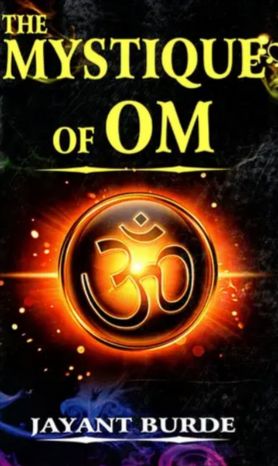

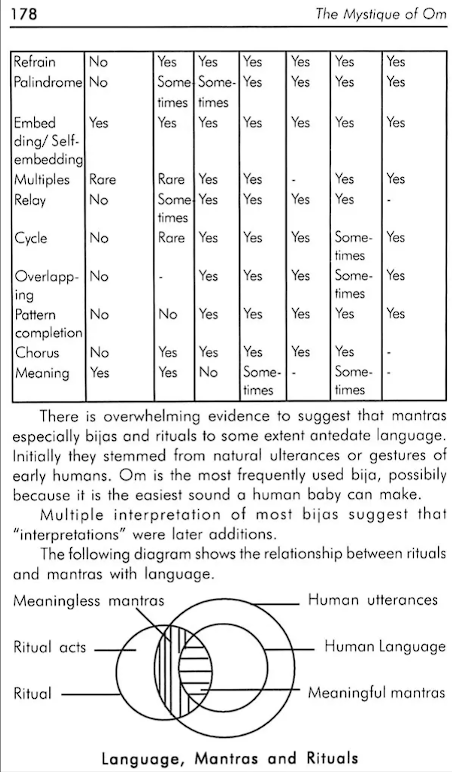


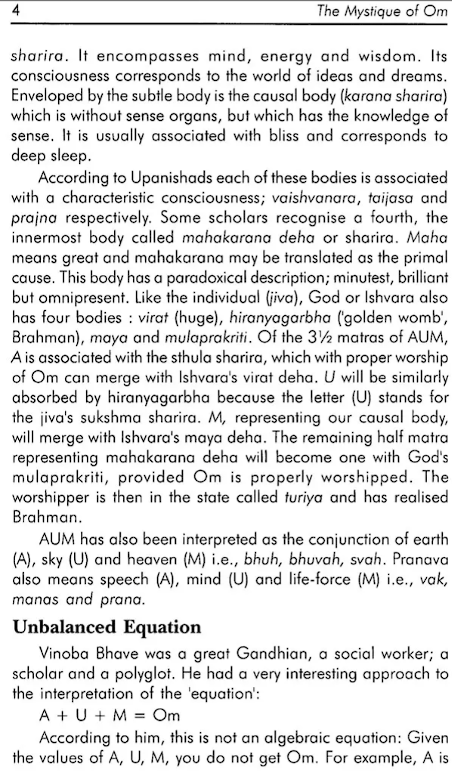
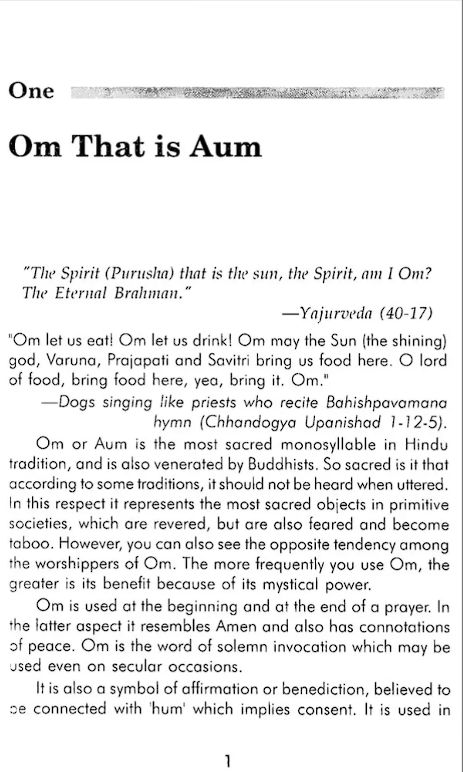
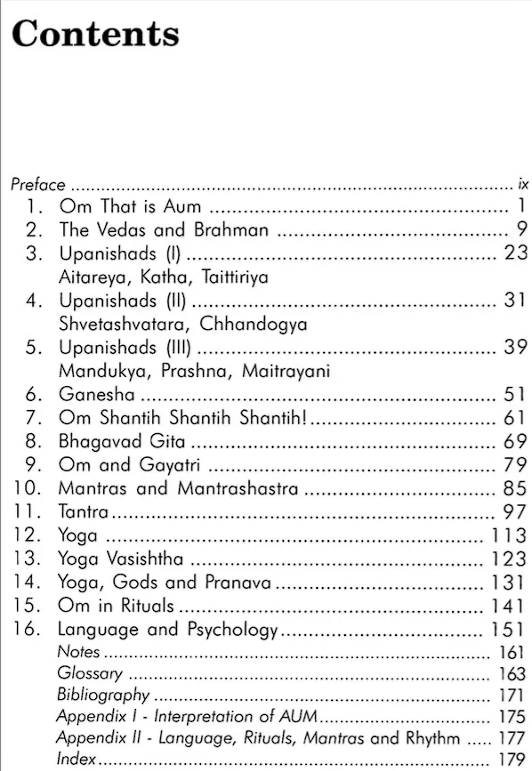
![The Mystique of Om [MLBD] 1 The Mystique of Om](https://saptarishisshop.com/wp-content/uploads/2023/12/The-Mystique-of-Om-278x300.jpg)
![The Mystique of Om [MLBD] 2 The Mystique of Om 7](https://saptarishisshop.com/wp-content/uploads/2023/12/The-Mystique-of-Om-7-300x300.png)
![The Mystique of Om [MLBD] 3 The Mystique of Om 6](https://saptarishisshop.com/wp-content/uploads/2023/12/The-Mystique-of-Om-6-300x300.png)
![The Mystique of Om [MLBD] 4 The Mystique of Om 5](https://saptarishisshop.com/wp-content/uploads/2023/12/The-Mystique-of-Om-5-300x300.png)
![The Mystique of Om [MLBD] 5 The Mystique of Om 4](https://saptarishisshop.com/wp-content/uploads/2023/12/The-Mystique-of-Om-4-300x300.png)
![The Mystique of Om [MLBD] 6 The Mystique of Om 3](https://saptarishisshop.com/wp-content/uploads/2023/12/The-Mystique-of-Om-3-300x300.png)
![The Mystique of Om [MLBD] 7 The Mystique of Om 2](https://saptarishisshop.com/wp-content/uploads/2023/12/The-Mystique-of-Om-2-300x300.png)
![The Mystique of Om [MLBD] 8 The Mystique of Om 1](https://saptarishisshop.com/wp-content/uploads/2023/12/The-Mystique-of-Om-1-300x300.png)

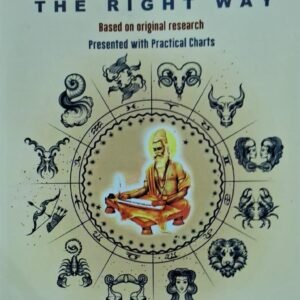
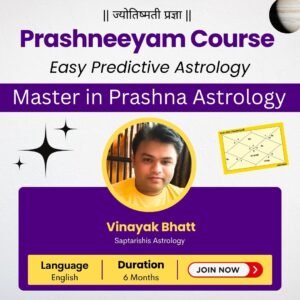
![Ayur Jyotisham(Ayurveda Astrology)[MXP]](https://saptarishisshop.com/wp-content/uploads/2025/10/a7644d7d-3347-4d09-90aa-e5632d747f1f-1-300x300.jpeg)
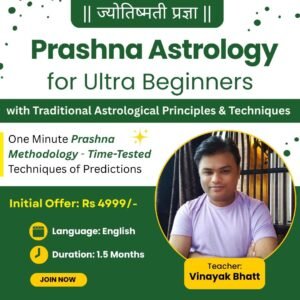
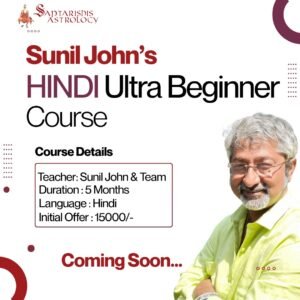
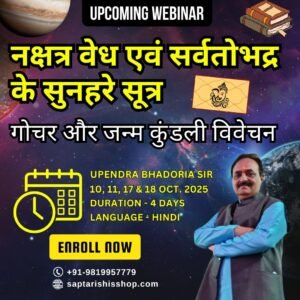
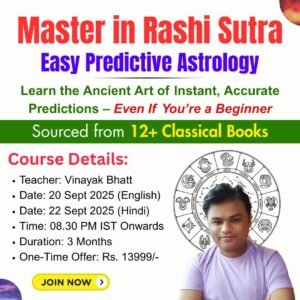
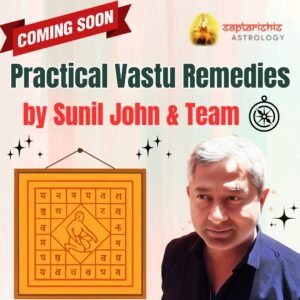
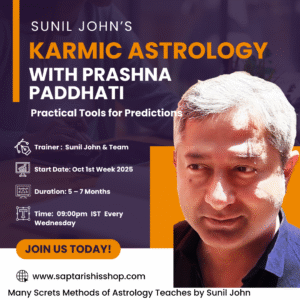
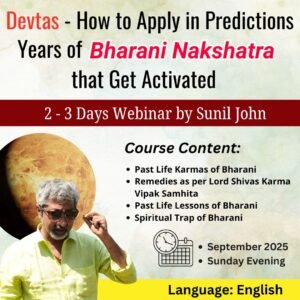

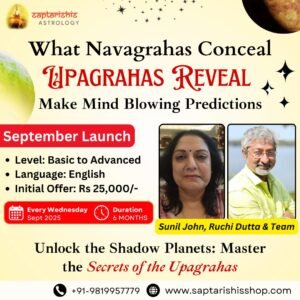

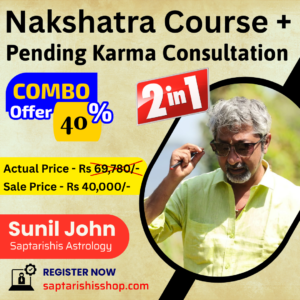
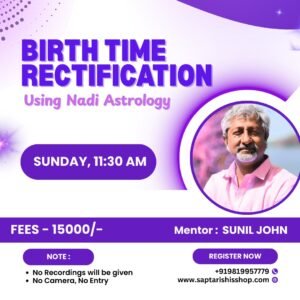
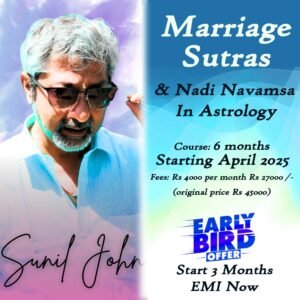
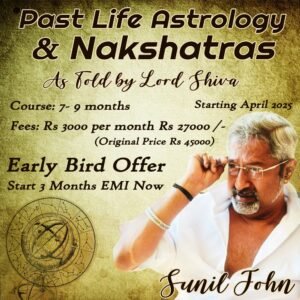
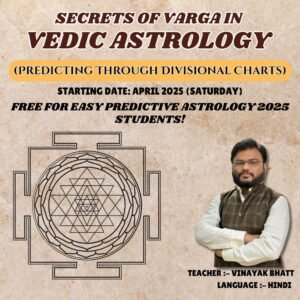
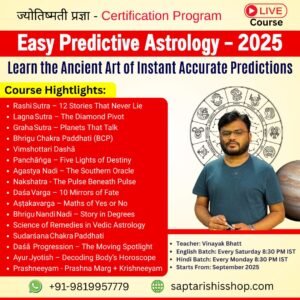
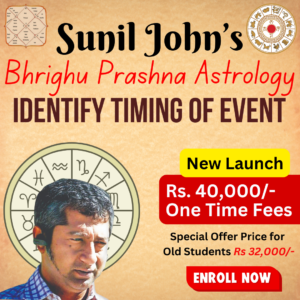
![Anatomy and Physiology of Yogic Practices: Understanding of the Yogic Concepts and Physiological Mechanism of the Yogic Practices [MLBD] 9 Anatomy and Physiology of Yogic Practices](https://saptarishisshop.com/wp-content/uploads/2023/12/Anatomy-and-Physiology-of-Yogic-Practices-1-100x100.jpg)
![Ayurvedic Astrology: Self-healing Through the Stars [MLBD] 10 Ayurvedic Astrology](https://saptarishisshop.com/wp-content/uploads/2025/06/Ayurvedic-Astrology-100x100.jpg)
Reviews
There are no reviews yet.